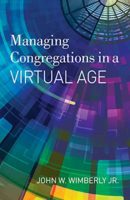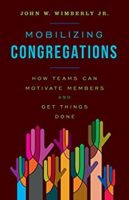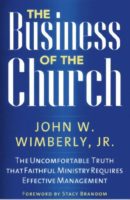
by John Wimberly
Howard Schultz, CEO of Starbucks Coffee, believes the key to the company’s success is not the coffee but “the Starbucks experience.” A visit to Starbucks is a sensory event filled with smells, sights, and sounds—from the aroma of fresh ground beans to the greetings from the staff, from the names of drinks and sizes of drinks to the fast, free Wi-Fi. Customers expect good coffee, but without the full Starbucks experience, coffee is just coffee.
As I thought about Schultz’s profound and profitable insight, I wondered, What was the experience people had when they walked in the congregations where I served as a pastor? What did they smell, see, hear, and touch that stimulated their senses? Did their sensory experiences enhance or take away from the spiritual quest to connect with God?
Words and feelings
As a Protestant in the Reformed tradition, I was taught from a very early age to focus on the Word. Church is, I was told, an intellectual adventure. Words and the Word matter. I am very grateful for that foundational teaching, and I still believe it to be true. But words aren’t the beginning or the end of our religious experience.
As Friedrich Schleiermacher taught, religion is as much a matter of the heart as of the head. The heart is moved by what we see, hear, touch and smell. Schleiermacher believed, and I agree, that religion starts with “essentially an intuition and a feeling.” The heart is certainly touched by words. But it is also engaged by feelings planted in us through our senses.
A congregation without the sound of children running through its halls or babies crying in worship is missing something precious. A congregation without the smell of a coffee pot where members gather after worship is missing something life-giving. A congregation without the sacred sounds of music, prayer and liturgy is missing a crucial element in the journey toward God. A congregation where you enter and leave without being touched by the welcoming hand of a greeter is somehow off-putting.
As a result of my reflections on Schultz’s insight and its ramifications for congregational life, I now urge my congregational clients to do a sensory inventory of what visitors and members experience from the moment they get out of their cars to their entrance into the building, their time in worship, and their walk back to the car or home. The more I hear leaders reflect on these inventories, the more important I realize they are.
Getting the experience right
In our congregations, we devote so much time to getting worship, religious education and mission programs right. How much time do we devote to getting the entire Sunday morning “experience” right? Precious little is what I am seeing. Indeed, what is the larger “experience” of being a member of a congregation? To many millennials, it is a feeling of institutionalism rather than an engagement with God.
The beauty of thinking along these lines is that it gets us focused on what visitors, not just members, are experiencing. It is an outward focus. And well that it should be. We routinely underestimate what a big deal it is for many visitors to step through our church doors. For some, it may be their first visit to a church—ever. Drawn by what Schleiermacher called “a deep need in (humanity),” they wake up on a Sunday morning and, instead of reading the news on their iPad, they venture into an unknown world called “church.” For many, it is their first visit to a church in a very long time. It is a big deal, a huge deal. The experience needs to be positive so they will come back, if not to this congregation then to some other one. To the extent that we create a warm, spiritually enriching experience for our visitors, we do the same for ourselves.
What are the sensory experiences of people who visit your congregation? What types of smells, touches, sounds, and sights do they encounter? What is the art on the walls? Do they hear laughter or murmuring? Do they receive a smile or something else?
Schultz visits numerous Starbucks stores every day. He wants to make sure the experience is right—the smell of freshly ground coffee strong, the staff welcoming, the music soothing. In my work as a consultant, I do the same thing in congregations. Analyzing the experience of people who visit our congregations leads to interesting, sometimes culture-changing revelations.
John Wimberly is an experienced pastor and consultant. As a consultant, he has worked with congregations and judicatories on strategic planning, staff designs for the 21st century, and congregational growth as well as financial and administrative management. He has MBA, MDiv, and PhD (theology) degrees. His books focus on effective management and leadership. John believes congregations can have a bright future!



